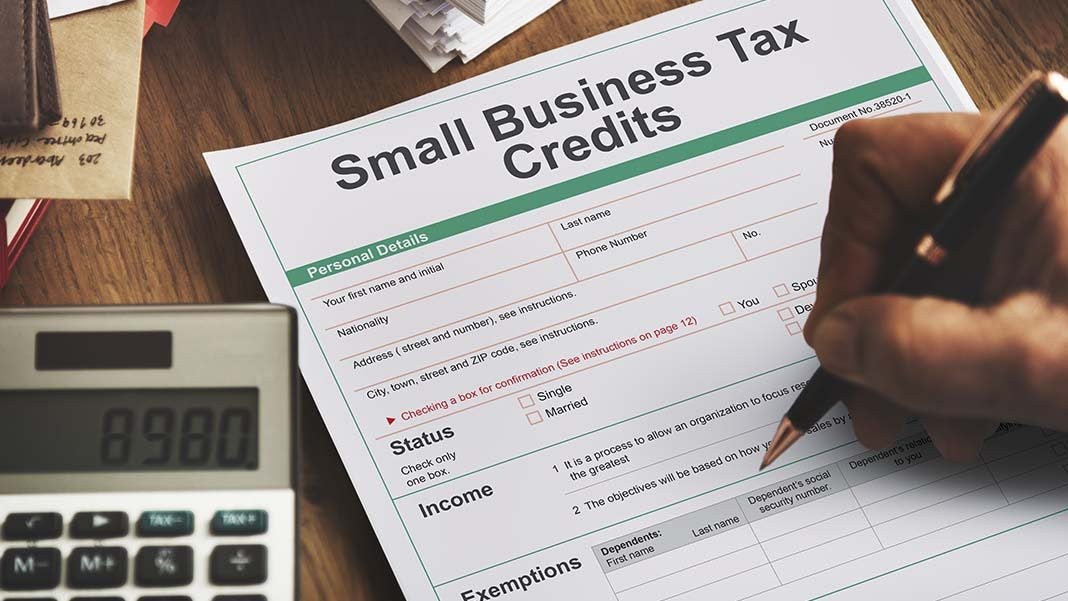How to Take Advantage of the Section 179 Deduction
By: SmallBizClub

Small businesses have a friend at the IRS. This friend, known as the Section 179 deduction, allows small businesses, in many cases, to deduct the entirety of a capital investment in a single tax year.
Taking advantage of the Section 179 deduction is essential for any small or medium sized business. While this deduction is very beneficial for all small business owners, there are a few ins and outs to understanding Section 179. Having a firm grasp on how this deduction can benefit your business and save you money in this and future tax years.
What Is Section 179?
Section 179 of the IRS tax code was designed to stimulate business investment following the Great Recession and has remained in effect ever since. This deduction makes it more feasible for businesses to invest in equipment and upgrades which in turn helps to stimulate the economy.
Section 179 allows businesses to deduct the full purchase price of qualifying equipment and/or software purchased, leased or financed during the tax year. While there are limitations to what qualifies, this does allow many businesses to save a substantial amount of money on their taxes.
This is important because historically, such property was depreciated in smaller amounts over the course of several years. Thanks to Section 179, a small or medium business can recover the entire cost of eligible property as an income deduction in a single year.
What Items Qualify?
There are two stipulations the IRS uses to determine what qualifies for the deduction.
First, it must be tangible, personal property acquired for business use.
Second, the property must be placed into service in the tax year (before midnight December 31st) for which you wish to claim it.
The IRS specifically references:
- Machinery and equipment.
- Off-the-shelf software purchased new or used for business purposes
- Vehicles between 6,000 and 14,000lbs (Section 179 has been called the “Hummer Deduction” thanks to the use, or abuse, of this provision)
- Property contained in or attached to a building (other than structural components), such as refrigerators, grocery store counters, office equipment, printing presses, testing equipment, and signs.
- Gasoline storage tanks and pumps at retail service stations.
- Livestock, including horses, cattle, hogs, sheep, goats, and mink and other fur-bearing
- Qualified real property – leasehold improvements (to an interior portion of a building that is nonresidential real property); restaurant or retail.
So, for example, if you purchased in 2016 $2,000 worth of computer equipment for your business you can deduct all of that amount from your business income in your tax return for the year.
To claim a Section 179 deduction complete IRS form 4562.
What Are the Limitations?
- There is a $500,000 deduction limit in a single year (the vehicle deduction is limited to $25,000).
- There is a total equipment spend limit of $2,000,000 per year, which is intended to ensure the allowance truly benefits small and medium businesses.
- The tax benefit is subject to income limitations – you can’t deduct more income than you report. For example, if you only report an income of $30,000, but you bought a piece of machinery that cost $50,000, you will only be able to deduct $30,000 of that machine’s price during this tax year. You will be able to carry over the additional $20,000 into future years. See more about carryovers below.
- Items must be used for business more than 50% of the time and the deduction must be proportionate to the percentage used for business. So, if you buy a piece of equipment for $2,000 but 25% of its usage is personal, you can only deduct $1,500 of the purchase price.
What Kinds of Property Do Not Qualify?
The IRS calls out:
- Land and land improvements.
- Property used predominantly to furnish lodging.
- Air conditioning and heating equipment.
- Property used outside the United States.
- Property acquired by gift or inheritance.
- Property purchased from related parties.
- Personal property transferred into business use.
Remember, the intent of the deduction is to stimulate business investment, so generally speaking, if the item is intangible (patents or copyrights) or doesn’t require some kind of production (land), it probably won’t qualify.
A Little More on Carryovers
Again, if your section 179 deduction is limited by the amount of your taxable income, you can carry the excess portion, known as a disallowed deduction, forward into future tax years. This works like capital loss carryovers. As an example, if you purchased a qualifying item for $8,000 but your net income was $5,000, only $5,000 of the purchase cost would have been deductible under Section 179 with the remaining $3,000 carried forward.
Taking Advantage of Section 179 Deductions
If you are considering a major purchase for your company make sure to check into whether or not it will qualify for the Section 179 deduction. Knowing that you can deduct all or even some of the purchase price can help make the investment a little easier on your business. After all, that is what this deduction was designed to do, make it possible for businesses to afford to invest in new purchases and thereby stimulate the economy.
Note – This article is intended to provide an overview and general guidance on the Section 179 deduction. Please consult your tax professional to ensure compliance with IRS and state taxation rules and regulations.
 Author: Jacob Dayan is a co-founder and partner of Community Tax and Finance Pal, a nationwide tax resolution, tax preparation, bookkeeping, and accounting firm. Follow them on Twitter @communitytaxllc.
Author: Jacob Dayan is a co-founder and partner of Community Tax and Finance Pal, a nationwide tax resolution, tax preparation, bookkeeping, and accounting firm. Follow them on Twitter @communitytaxllc.
3623 Views












